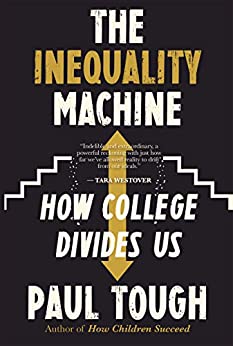More on this book
Community
Kindle Notes & Highlights
by
Paul Tough
Read between
February 13 - February 20, 2020
At Ivy Plus colleges, on average, more than two-thirds of undergraduates grew up rich, and fewer than 4 percent of students grew up poor. Elite college campuses are almost entirely populated by the students who benefit the least from the education they receive there: the ones who were already wealthy when they arrived on campus.
Jon liked this
The American system of higher education has the potential to be a powerful engine of mobility, able to reliably lift young people from poverty to the middle class, and from the middle class to affluence. But in reality, for many young Americans, it functions as something closer to the opposite: an obstacle to mobility, an instrument that reinforces a rigid social hierarchy and prevents them from moving beyond the circumstances of their birth.
Jon liked this
through our current system of higher education, we seem to have reconstructed, in the guise of openness and equality, an old and established aristocracy, one in which money begets money, wealthy families remain wealthy for generations, and young people like Shannen, born without privilege and power, stay stuck at the bottom.
Jon liked this
For students like Ned’s, this leads to a confusing situation in junior and senior year of high school. The official line is that we are still living in 1962: Don’t go crazy trying to get into a super-elite college! Just choose the school that makes you happy, where you’re going to find your true identity and become your authentic self. You’ll get a good education wherever you go. But all around, there are signs that this official line is just that, a line, and the real message is: Get your scores as high as you can, and then do exactly what all the other high-scoring students are doing. Go to
...more
Jon liked this
But when she showed her parents the list of colleges she aspired to, her father told her she could do better. He went online and found a list of the one hundred most selective American colleges. He scrolled down until he got to number 30, drew a line, and told Clara that she shouldn’t apply to anything below that line.
Hoxby’s theory was that the main obstacle standing in the way of those income-typical high achievers was an information deficit: they simply didn’t know much about elite colleges and how to apply to them. They didn’t know, for example, that they were eligible for fee waivers that would allow them to apply to college free of charge. They didn’t know that with test scores as high as theirs, they would likely be admitted to selective colleges. They didn’t know that if admitted, they would likely get lots of financial aid—so much aid, in fact, that it might actually be cheaper for them to attend
...more


